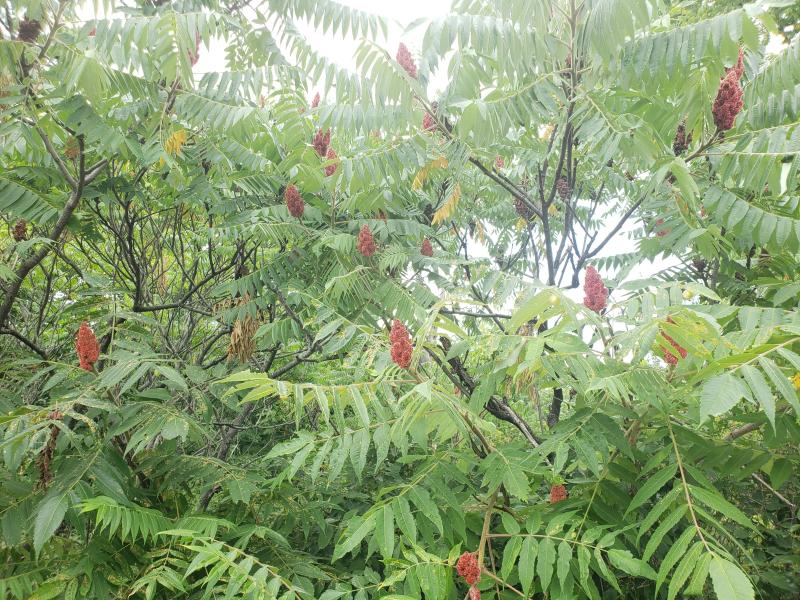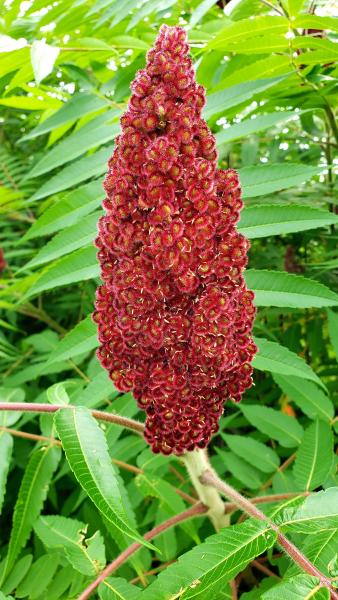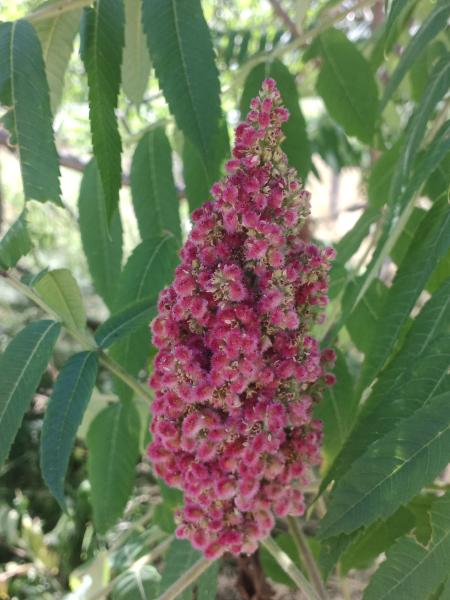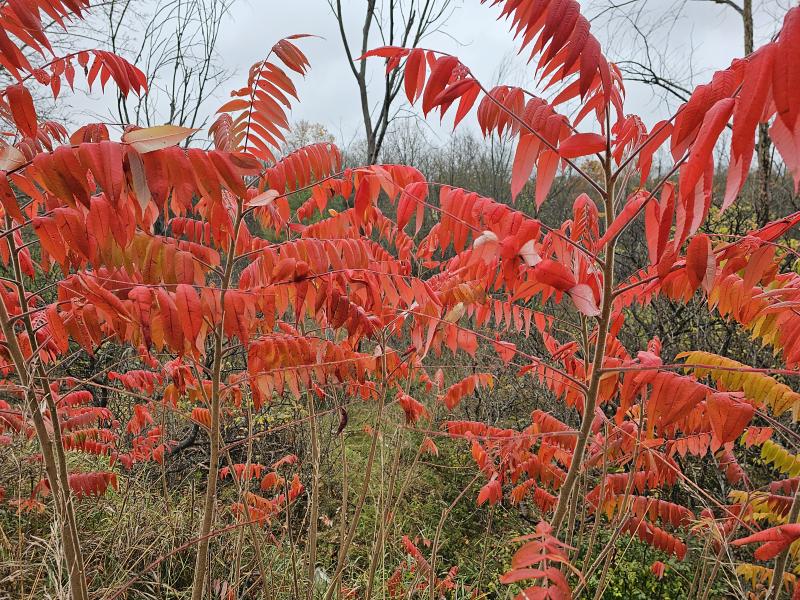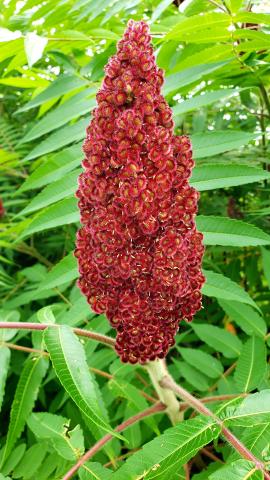
Names and Their Meanings
Staghorn Sumac - Rhus typhina
Staghorn Sumac
Description
A large, dioecious shrub to small tree growing up to 14 m (25- 30 feet), that often grows in wide stands. The bark is thin and smooth, with young twigs densely hairy. The deciduous leaves are alternate and pinnately compound. The leaflets are teethed along the margins, darkly green above and pale green below, turning to bright reds, oranges, purples, and yellows in the autumn. The greenish-yellow flowers grow in terminal clusters, with male and female flowers occurring on separate plants. The fruit is a red drupe covered with hairs that stands upright, called a catkin. Staghorn sumac likes fertile, sunny upland sites, occurring in open fields, forest edges and clearings, and open woods. The fruits ripen from August to September.
Conservation Status
S5 (Secure) in Ontario
Uses
Staghorn Sumac gets its name to the fuzziness of the deciduous branches and stems, which resemble the fuzzy antlers of stags. Also known as Lemonade Tree, this plant is most widely known as a source of sumac “lemonade” or tea, which is rich in Vitamin C and antioxidant activity, and tastes like lemonade. Catkins are collected when they are at their brightest color, crushed off the stem, and a cold infusion is made in the refrigerator, which then gets strained of the tiny hairs and berries before drinking. Sumac is prepared as a hot tea as well, used as a gargle or beverage for sore throat; it has antiseptic and astringent qualities. Sumac twigs have been used as spigots taps for Maple tree tapping. The leaves have been used in a smoking mixture along with Tobacco, Bearberry and Alternate-leaved dogwood.
F. W. Waugh recorded John Arthur Gibson referring to Staghorn Sumac as both a food source and a dye source; indeed, the leaves and branches are high in tannins, suggesting they are also useful for tanning purposes. He also reports that new shoots were peeled and eaten by young mothers to make their milk better. Kanyen'kéha herbalist Katie Dybeau described Sumac as a medicine to F. W. Waugh in 1912. Waugh documented among Ojibway in 1916, knowledge from Mrs. Dumoulin that pounded roots of sumac were used to heal abscesses (swelling) or boils, after the source of the infection was drawn out with a poultice of Trillium roots. Gladys Tantaquidgeon recorded, during her 1931 visit to Six Nations of the Grand River to interview Delaware people who had moved there and become part of the community, that they used a tea of sumac berries to remedy diarrhea.
